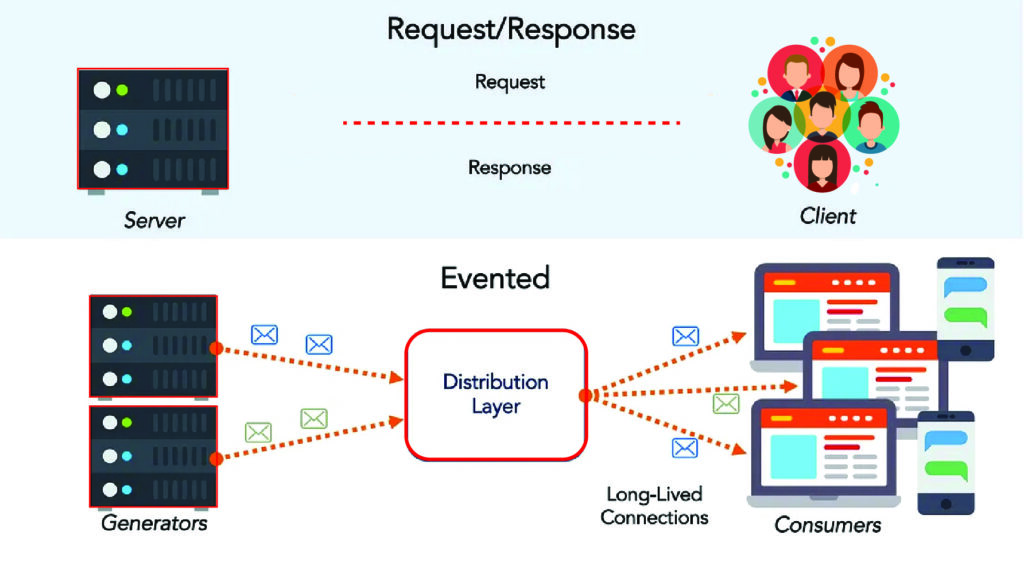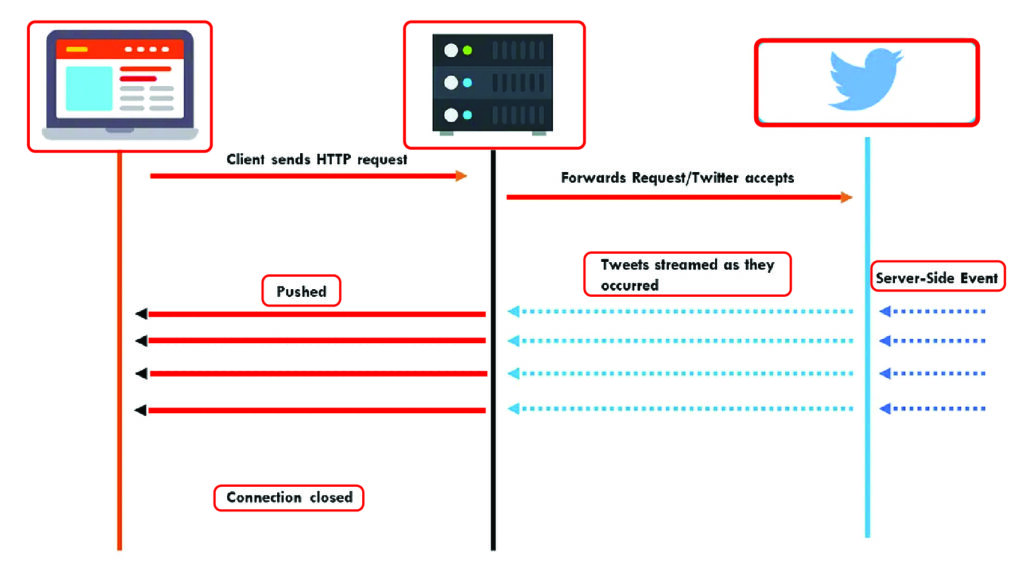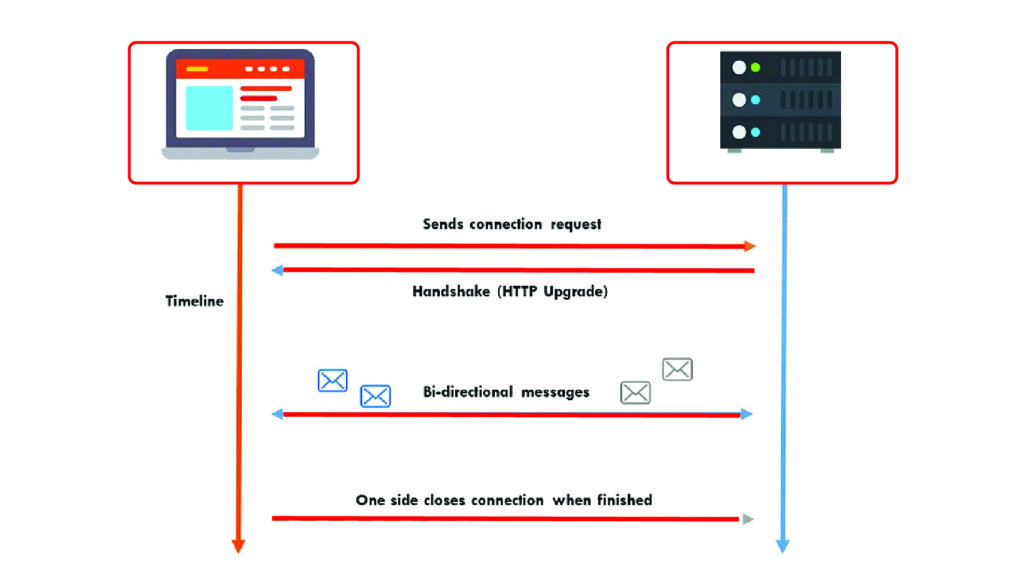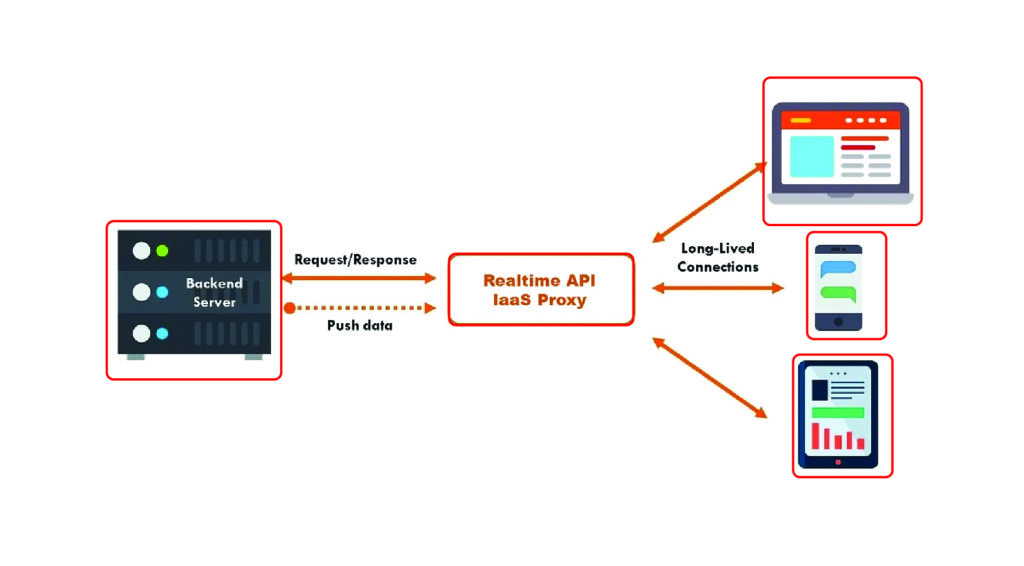
Table of Contents
ToggleLet’s dive a little deeper. Realtime does not always imply that anything is updated instantaneously (there is no one meaning of “instantly”). So, instead of focusing on the impact, let’s consider the method. Realtime is the automatic, synchronous, and simultaneous interaction between endpoints at a speed during API Integration.
- Realtime means that both ends may access data at the same time.
- Bi-directional indicates that data may be transferred in both directions.
- Endpoints are devices that deliver or receive data.
The concept of pushing data

We’ll begin by contrasting data push with “request-response.” The most fundamental kind of communication for computer systems is request-response. Computer A makes a request to Computer B, which responds with a response. In other words, open a browser and enter “reddit.com.” The browser sends a request to the Reddit servers, which respond with the web page.
A data push model pushes data to a user’s device rather than the user pulling (requesting) it. For example, current push email enables consumers to get email messages without actively checking. Similarly, we may look at data push in a more continuous meaning, in which data is constantly transmitted. Anyone with access to a specific channel or frequency can receive.
HTTP Streaming

HTTP streaming establishes a long-lived connection enabling rapid and continuous data push. You combine the comfort of HTTP with the speed of WebSockets. The client submits a request to the server, and the server keeps the answer available for an unlimited time. This connection will remain active until a client terminates it or a server-side event happens. If there is no fresh data to push, the app emits a series of keep-alive ticks to prevent the connection from closing.
HTTP Long-Polling

HTTP long-polling establishes a long-lasting connection for immediate data push. It is the simplest method to use as well as the most dependable. This approach creates a long-lasting link for immediate data push. The server keeps the request open until it receives new data or a timeout occurs. Most APIs transmit a timeout after 30 to 120 seconds, depending on how they were configured. When the client receives a reply (whether it be from fresh data or a timeout), it sends another request, which is continued indefinitely.
Real-time Libraries
Here is a collection of tools available for developers to construct real-time apps based on certain languages/frameworks:
- .NET/C#
- Javascript
- Ruby/Rails
- Node.js
- PHP
Realtime API Integration as a Service

Realtime API Integration enables developers to integrate realtime data push into their current APIs. Typically, you would not need to adjust your existing API contracts because the streaming server would operate as a proxy. The proxy architecture enables these services to integrate seamlessly into an API stack. This implies it may inherit additional features from your REST API, such as authentication, logging, throttling, and so on, making it simple to integrate with an API Solution. WebSocket communications proxied as HTTP requests may be processed statelessly by the backend. Messages from a single connection can be load balanced over many backend instances.
Benefits of Real-Time API IaaS
- Create a custom internal API.
- Integrates with current API management systems.
- Does not bind you to a particular technology stack.
- Provides real-time capabilities across the whole stack.
- Typically proxy-based, using pub/sub or polling.
Conclusion
Finally, IT company’s API Integration will change your data synchronization. Implement real-time data synchronization seamlessly to ensure that your systems work together nicely. Our expertise will simplify your procedures, resulting in efficiency, accuracy, and exceptional connection. Embrace the future of frictionless connection and revolutionize your business with our API knowledge. Connect, sync, and succeed in the realm of real-time data management. Improve business processes, increase teamwork, and remain ahead in the competitive landscape. Trust our API Solution to help your organization use the potential of synced data. Are you ready to synchronize success? Connect with us today.
API Integration is a technology that enables seamless communication between different software systems, facilitating real-time data synchronization for enhanced operational efficiency.
Real-time data sync ensures that businesses operate with the most up-to-date information, enabling informed decision-making and staying competitive in today’s dynamic landscape.
Real-time data sync enhances business operations by minimizing delays, improving accuracy, and fostering a more agile and responsive environment.





